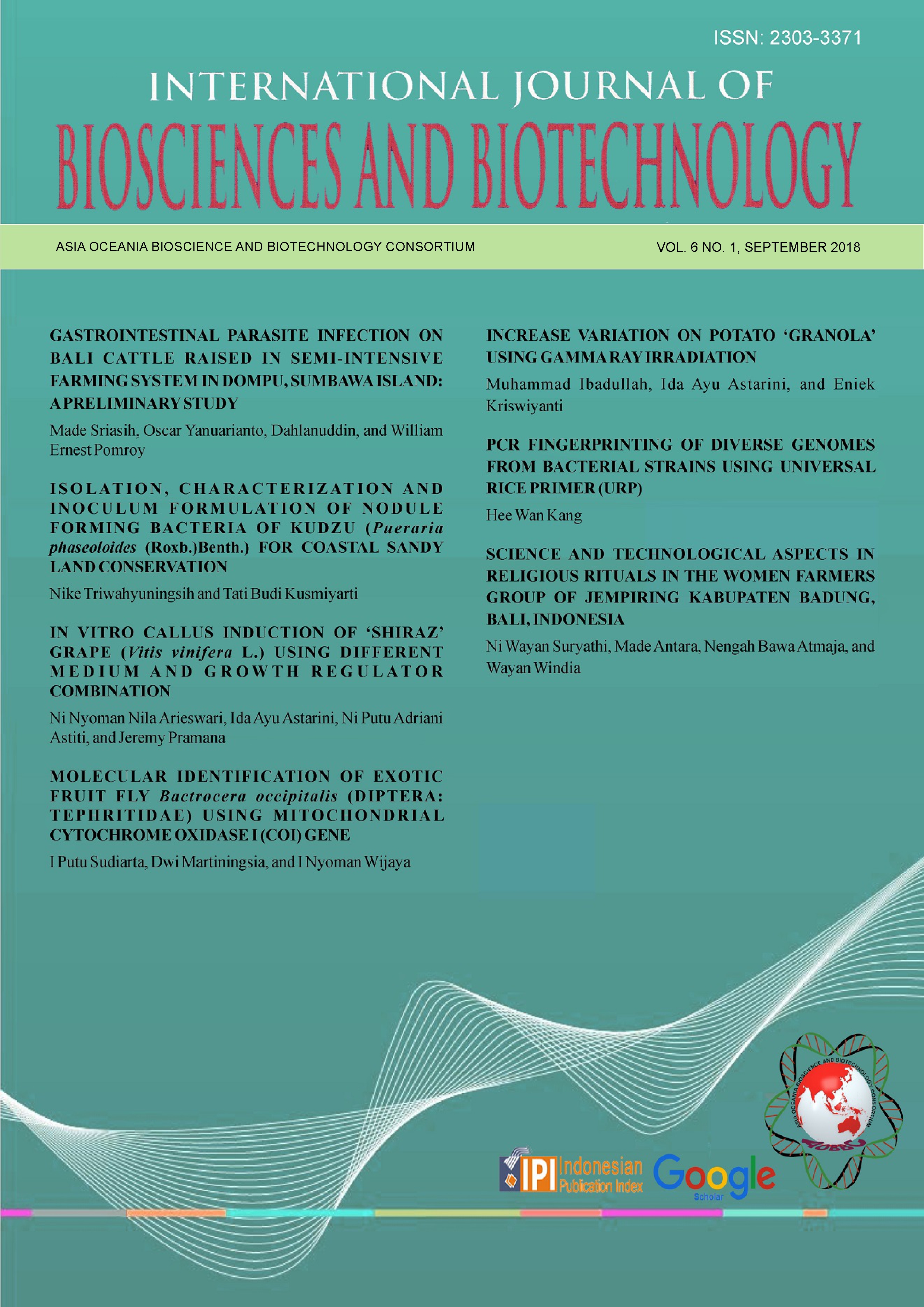INCREASE VARIATION ON POTATO ‘GRANOLA’ USING GAMMA RAY IRRADIATION
Abstract
Potato is one of the main carbohydrate sources around the world, including Indonesia. Potato production in Bali generally does not use good quality of potato seed, causing disease infection and reduce productivity. An alternative effort to produce high quality potato is by induce mutation of tuber using gamma ray irradiation. This study aims to find out percentage of survival after irradiation of ‘Granola’ potato shoots and determine the post-irradiation potato growth and productivity. This research was conducted at Laboratory of Central Application of Isotope and Irradiation (PAIR), Pasar Jumat, Batan, Jakarta and UPT BBITPH Bedugul, Bali. Planting materials were early generation (G0) potato seed tubers. This study employ completely randomized factorial design with one factor, i.e. irradiation doses of 0, 20 gy and 40 Gy. Variable observed included percentage of shoots survive, and variations in production. Results showed that 20 Gy was the best dose to increase tuber production.






